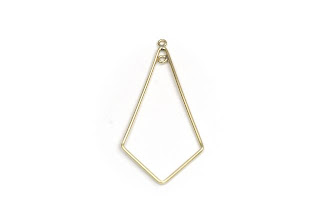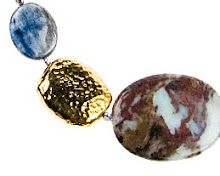...and what it Means to the Accessories Industry
by: Damien Zielinski

Precious metals have always commanded the attention of both stock market traders and jewelry aficionados alike, but until recently the two have been mutually exclusive. As we bear witness to a continuing surge in the market value of gold and sterling silver and prices that are at an all-time high, it seems that exchanges normally confined to trading floors will be the topic of conversation at showrooms and boutiques… whether the jewelry community likes it or not.

Never insulated from concepts of money and riches, gold and silver have been symbols of wealth, prestige, and beauty since antiquity. Instantly recognizable and culturally transcendent, these precious metals seem to epitomize luxury. While it could be possible that the most beautiful minerals happen to be the most rare and expensive, the truth is that interest in precious metals is also caused, quite simply, by their scarcity: they are, by definition, precious in this world, and occur in limited quantity. If one should wear a gold chain around his neck, they are not only making a stylistic statement with the highly reflective and tantalizingly coloured element, but are also to some degree aligning their image with the kings, queens, pharaohs, and emperors who have been adorned by gold in the past. To wear gold is to say 'I can afford to wear gold.' However, the high market worth of pure gold only means so much when low karat alloys, plating, and gold vermeil enter the picture: one can look like royalty without necessarily footing a royal bill. With such innovations, it is difficult to assess whether or not gold still bears any meaningful imperial association with monarchs of old, but surely these impressions still linger, to some degree, in the subconscious of modern jewelry wearers, designers, and observers. The history and culture of the metal is simply so long and so rich that such connotations will always be ingrained in the collective mind.

Another complicating factor in the unfolding stories of gold and silver is that of their use as currency in the premodern era. With the establishment of Lydian mints in 700 BC, the precedent was set, and the association of silver with monetary value was inherited by countless civilizations. The words 'silver' and 'money' are synonymous in at least 14 different languages, and the contemporary stock exchange still uses gold as a benchmark litmus indicator for the market as a whole. Banks still carry gold bullion, and your grandparents probably have at least one silver dollar lying around somewhere. While it seems preposterous to actually wear money, no one is bothered by the time-honoured duality of gold and silver as fashion accessories and units of currency both. Yet, there is a kind of tension in this double nature: while the cultural appreciation of gold and silver has remained relatively unchanged, enjoying what seems to be permanent appreciation in the jewelry industry throughout transient fads and passing fashions, the market value of both metals is notoriously unstable.

Investors and traders are used to sitting on edge as numbers rise and fall, but there is less awareness of gold and silver's market worth for ground-level jewelry consumers. The reason for this is that global market-level fluctuations in value are not reflected in the prices of wholesale jewelry components at a rate that expresses the actual speed of market changes. In other words, while silver prices change daily, a jewelry designer may only buy silver components monthly. Something like gasoline, for example, is constantly priced based on market value, keeping the everyday consumer in touch with stock exchange realities, but precious metals have the effect of incremental increases and decreases that correspond with the rate of wholesale purchases. So, while wholesalers of components tend to buy silver and gold at prices directly dictated by market worth, a desire to remain competitive and shock repeat customers as little as possible causes more sporadic price increases than are actually representative of silver's true value at any given time.
As the bull market keeps rising, precious metals grow even more expensive, and wholesalers are unable to break even without raising prices. Having to shell out more for the same metal goodies may frustrate small businesses and amateur designers, and can come at some consternation if the market forces aren't understood. 'If silver and gold prices have always been changing, and the price hasn't significantly affected the consumer,' one might ask, 'why should prices go up so much now? And after all, couldn't market values go back down just as suddenly?'
It is always possible, and the stock exchange is naturally defined by unpredictability, but recent trends seem to suggest otherwise: since the spring of 2000, gold and silver have both more than doubled in worth, standing in contrast to a long period of relative stability since the last big spike in 1980. The central cause of the increase has been widely credited to a huge surge in demand associated with new and expanding markets in parts of the world that, previously, did not account for nearly as much jewelry consumption.

credit: http://www.palagems.com/gem_news_2007_v1.htm
India and China, especially, have recently witnessed a tremendous growth of the middle class, and a proportionate demand for things that such families crave, like travel, services, and luxury commodities. In attempting to explain the impact of this rising consumerist presence on the prices of gold and silver, some have pointed, for example, to gold's historic prominence in Chinese culture, and the resulting love of it that courses through the veins of Chinese people and transcends visual appeal. It is also said that Indian culture is even more reverent to precious metals, and that certain Indian ceremonies like weddings tend to spur gold purchase on such a large scale that stock market spikes can actually be mapped on a calendar. Whether or not investigations into localized histories and cultural stereotypes are even necessary, truthfully, is debatable at best. The simple reality is that enormous populations of jewelry wearers have exploded onto the scene, and their demand for gold and silver don't need any 'deeper' explanation. Statistics also show that demand for silver is actually going down in other fields, such as photography, which due to increasing digitization relies less and less on silver nitrate.
This rise in demand is occurring against the backdrop of an actual increase in the production of precious metals- 2005 saw, for example, an all time high in silver output. It has been recorded that 50% of all gold produced in history has been mined after 1960. Both of these figures demonstrate that increasing scarcity is not the issue; these things have never been more readily available. Almost all 'scrap' silver and gold is melted down and reused, so not only are we producing more, but we tend to lose almost none. With such extraordinary abundance, it seems as though prices should be going down. Unfortunately, the wealth in supply is met by an even greater presence of global demand, and therein lies the rub.
There is just no way around the fact that everyone loves to adorn themselves with gold and silver, and with record-breaking demographic transitions, millions more are suddenly able to afford it. The results are a stubborn bull market offering no sign of relent, and sweeping price changes that can no longer sit under the radar of designers and artists who would rather focus on fashion trends than those of the stock market.

 credit: InAccessories.com
credit: InAccessories.com















































